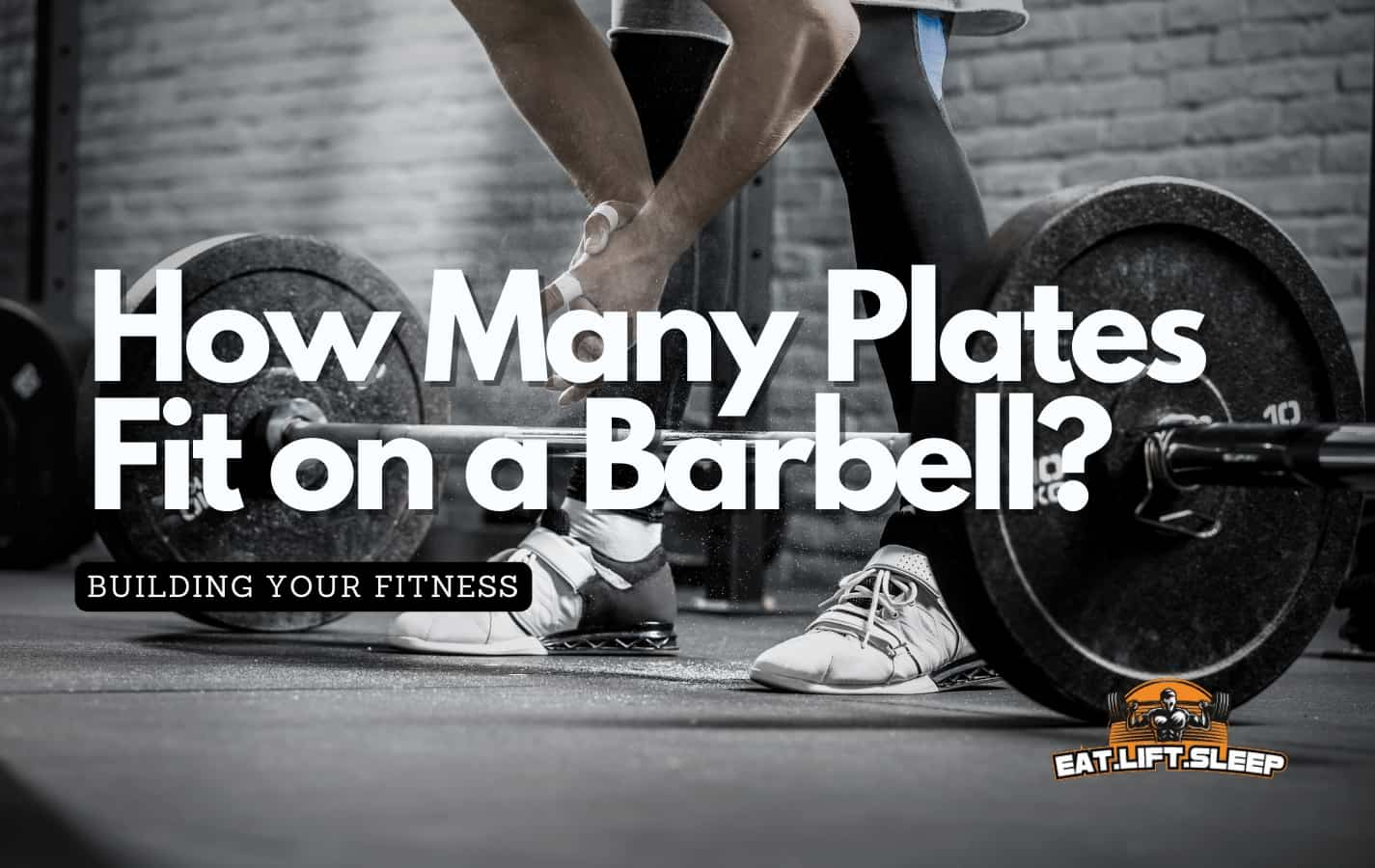Have you ever wondered how many plates can fit on a barbell? The answer may not be as simple as you think.
While it depends on the size and weight of the plates and barbell, there are also other factors to consider such as the length of the sleeves and collar. The number of plates that can fit on a barbell will vary depending on the type of barbell being used.
For example, an Olympic barbell typically has a longer sleeve length than a standard barbell, allowing for more plates to be added. Additionally, the diameter of the plates will also play a role in how many can fit on the barbell.
With so many variables to consider, let’s dive deeper into this topic to better understand just how many plates can fit on a barbell.
Understanding The Factors That Affect Plate Capacity
When it comes to determining how many plates can fit on a barbell, there are several factors to consider. One of the most important is plate thickness considerations. The size and weight of each plate will directly affect how many can be added to the barbell without exceeding its capacity.
Another key factor in determining plate capacity is weightlifting safety precautions. It’s important to not only consider the weight of the plates themselves but also the total weight of the barbell and any additional equipment or weights that may be added.
Overloading a barbell can not only damage the equipment but also put the lifter at risk for injury.
Overall, understanding these factors is essential for anyone looking to safely and effectively add plates to their barbell. By taking into account plate thickness considerations and weightlifting safety precautions, lifters can maximize their gains while minimizing their risk of injury.
The Role Of Barbell Size And Length
When it comes to barbells, length and weight capacity are two key factors to consider.
The length of a barbell is determined by the size of the plates that can fit on it. The larger the plates, the longer the barbell should be.
On the other hand, a barbell’s weight capacity is largely determined by the number of plates it can fit – the more plates a barbell can fit, the more weight it can handle.
Therefore, when selecting a barbell, it’s important to consider the size of the plates you’re using, as well as how many you need for your desired weight.
Barbell Length
As a weightlifter, you know the importance of having the right equipment to achieve your fitness goals. One crucial piece of equipment is the barbell, which comes in different sizes and lengths to accommodate various exercises and training levels.
When it comes to barbell length, it can affect how many plates you can fit on it without exceeding its weight capacity. The weight capacity of a barbell typically depends on its length, thickness, and material. Longer barbells can hold more weight than shorter ones due to their increased surface area. However, the longer the barbell, the more flex it may have under heavy loads.
Additionally, if you plan on using larger weightlifting plate sizes such as 45lb plates, you need to make sure that your barbell has sufficient space between sleeves to fit them all comfortably. It’s essential to choose a barbell that matches your lifting ability and style while considering the available space in your gym or home workout area.
Understanding how much weight you plan on lifting and what type of plates you will use should be taken into consideration when deciding on a suitable barbell length for your needs.
Weight Capacity
Now that we have discussed the importance of barbell length, let’s move on to another crucial factor in choosing the right equipment – weight capacity.
The weight capacity of a barbell depends not only on its length but also on other factors such as plate thickness and barbell material. These aspects affect how much weight a barbell can handle without bending or breaking.
Plate thickness is an essential factor in determining the weight capacity of your barbell. Thicker plates require a sturdier barbell to hold their weight without bending or breaking. Meanwhile, thinner plates may not need as strong a barbell since they weigh less and distribute the load more evenly.
The material used to make the barbell also affects its weight capacity. Barbells made from high-quality materials like stainless steel or chrome-moly steel can handle more weight than those made from lower-quality materials like aluminum or plastic.
When choosing a barbell, consider both plate thickness and barbell material to ensure you get one that can handle your lifting needs safely and effectively.
Plate Size
Now that we have discussed the importance of weight capacity in choosing the right barbell, let’s move on to another crucial factor – plate size.
The size of your plates can significantly impact your lifting experience and performance, as well as the type of barbell you should use.
Weight increments and plate thickness are essential factors to consider when choosing the right plate size.
Some plates come in standard sizes, while others come in fractional weights, allowing you to increase or decrease the load in smaller increments.
Thicker plates may also require a sturdier barbell, while thinner plates may not need as much support.
In addition to weight increments and plate thickness, you should also consider the material used to make your plates.
Cast iron is a popular choice for its durability and affordability, but bumper plates made from rubber or urethane are ideal for Olympic lifts due to their shock-absorbing properties.
Consider your goals and lifting style when selecting the best plate size for your needs.
The Impact Of Plate Diameter On Capacity
As we learned in the previous section, the size and length of a barbell can greatly impact its capacity. However, another factor to consider is plate thickness.
The thickness of the plates being used will affect how many can fit on the barbell. Thicker plates take up more space on the barbell, reducing its overall capacity. This is because weight distribution becomes more difficult with thicker plates.
As a result, fewer plates can be added to the barbell before it reaches its maximum weight limit. Weight distribution also plays a crucial role in determining how many plates can fit on a barbell.
If all of the weight is concentrated on one side of the bar, it may become unstable and unsafe to use. Therefore, it’s important to evenly distribute the weight by adding plates in pairs on either side of the bar.
By doing so, you’ll maximize your barbell’s capacity while also ensuring safe usage during your lifts.
Determining The Maximum Plate Load For Your Barbell
When it comes to barbell weight limits, knowing how many plates can fit on a barbell is important. But it’s not just about the number of plates you add; the type of plate material also plays a significant role in determining your maximum load.
Different types of plate material have different weights and thicknesses, which can affect how much weight you can stack onto your barbell.
For example, rubber bumper plates are typically thicker but lighter than iron plates, meaning you may be able to fit more weight on your bar with rubber plates. On the other hand, iron plates are denser and heavier, making them better suited for heavy lifting.
Ultimately, determining your maximum plate load will depend on a variety of factors including your own strength and fitness level, as well as the intended use of your barbell.
Whether you’re training for powerlifting or just looking to build muscle and tone up, knowing your maximum plate load can help you achieve your fitness goals safely and effectively.
Is It Safe to Bench Without a Spotter While Pushing Your Limits?
When attempting to push your limits during a bench press, it is essential to prioritize safety. While some experienced lifters may have the necessary strength and control to bench press safely without a spotter, it is generally not recommended. A spotter provides an extra layer of security, reducing the risk of potential accidents or injuries. It’s better to err on the side of caution and seek assistance for those heavy, challenging sets.
Conclusion
So, how many plates can fit on a barbell? The answer isn’t so straightforward. It depends on several factors, including the size and length of the barbell, as well as the diameter of the plates.
But don’t worry, by understanding these variables and doing some simple calculations, you can determine the maximum plate load for your specific barbell.
Before you start loading up your barbell with plates, take some time to consider these factors and plan accordingly. With a little bit of preparation and knowledge, you can ensure that you’re lifting safely and effectively with the appropriate weight capacity for your barbell.
So go ahead, grab those plates and get lifting!






Leave a Reply